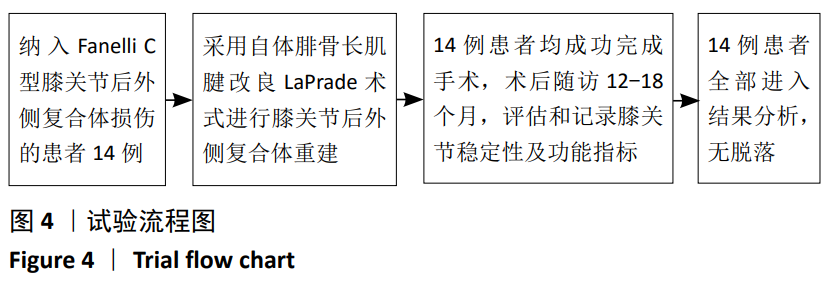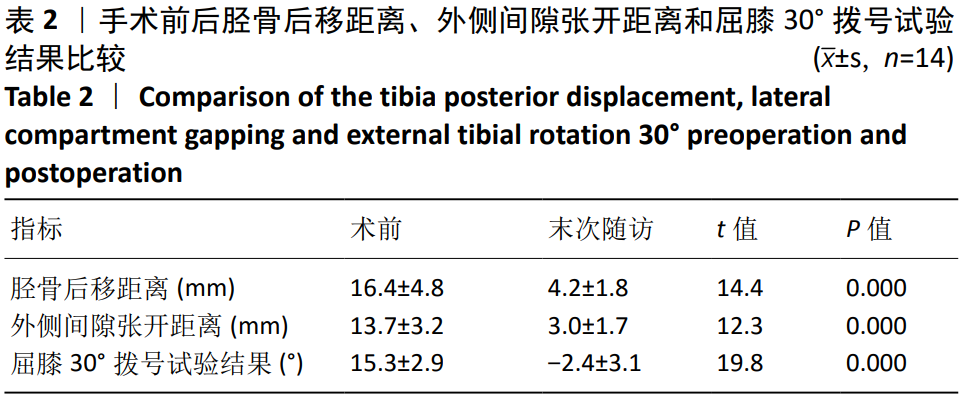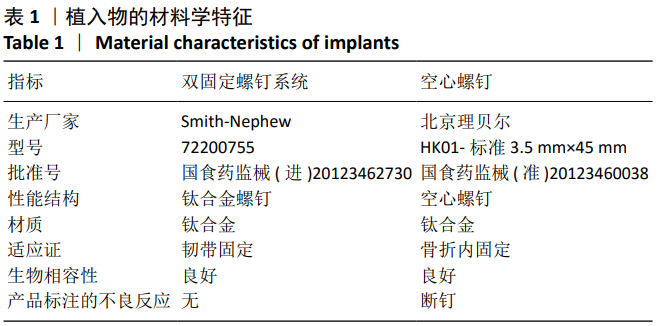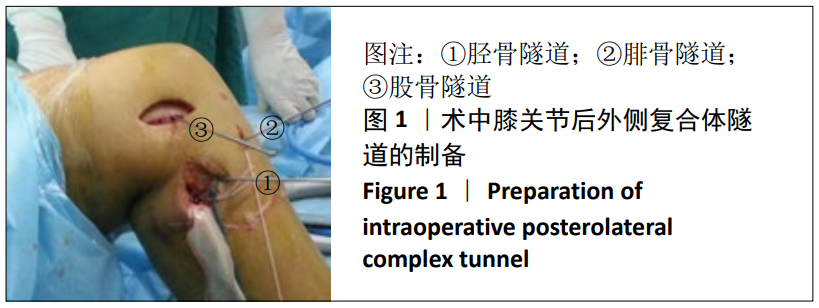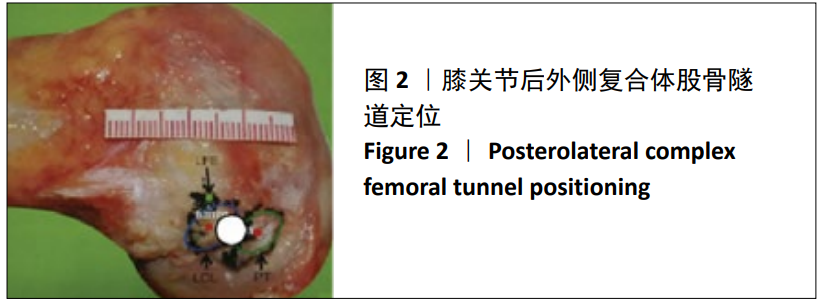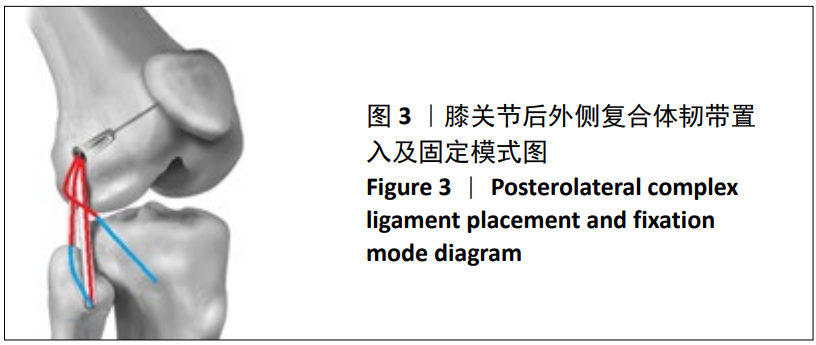中国组织工程研究 ›› 2021, Vol. 25 ›› Issue (6): 821-825.doi: 10.3969/j.issn.2095-4344.2381
• 骨与关节生物力学Bone and joint biomechanics • 下一篇
模拟重建膝关节后外侧复合体核心韧带后膝关节稳定性评估
仲鹤鹤,孙鹏鹏,桑 鹏,吴术红,刘 毅
- 遵义医科大学附属医院骨科,贵州省遵义市 563000
Evaluation of knee stability after simulated reconstruction of the core ligament of the posterolateral complex
Zhong Hehe, Sun Pengpeng, Sang Peng, Wu Shuhong, Liu Yi
- Department of Orthopedics, Affiliated Hospital of Zunyi Medical University, Zunyi 563000, Guizhou Province, China
摘要:
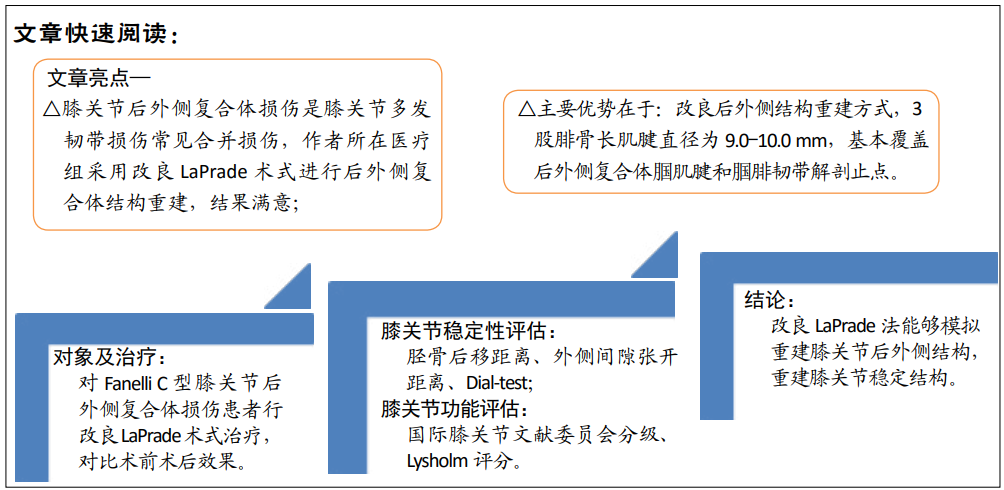
文题释义:
膝关节后外侧复合体:主要包括3个核心结构:外侧副韧带、腘腓韧带和腘肌腱。外侧副韧带是限制膝关节内翻的初级稳定结构,同时外侧副韧带还具有对抗胫骨后移和外旋应力;腘肌腱和腘腓韧带在维持膝关节外旋稳定性上起着重要作用,是限制膝关节外旋的初级稳定结构。
膝关节后外侧复合体损伤:膝关节多发韧带损伤是一种高能量损伤,膝关节后外侧结构是维持膝关节稳定的重要结构,对于膝关节多发韧带损伤中合并的后外侧复合体损伤,如诊断或治疗不及时,常易引起膝关节慢性不稳定以及重建韧带失效等相关并发症。
背景:膝关节后外侧复合体损伤是膝关节多发韧带损伤的常见类型,后外侧复合体重建能够恢复膝关节后外侧稳定结构,重建膝关节稳定性。
目的:探讨取自体腓骨长肌腱移植物采用改良LaPrade法重建膝关节后外侧复合体损伤的可行性及临床疗效。
方法:2014年10月至2017年3月遵义医科大学附属医院骨科收治14例膝关节后交叉韧带合并膝关节后外侧复合体损伤的患者,一期同时重建后交叉韧带及后外侧复合体结构,膝关节后外侧复合体结构损伤均为Fanelli分型C性,采用改良LaPrade法取自体腓骨长肌腱功能重建,模拟重建后外侧复合体核心韧带的解剖形态和功能。术后随访大于1年,比较手术前后后向应力下胫骨后移距离、伸膝0°位内翻应力下外侧间隙张开距离、屈膝30°位拨号试验胫骨外旋角度变化,以及国际膝关节文献委员会分级和Lysholm评分。
结果与结论:①患者随访12-18个月,部分患者合并屈膝受限,所有患者无伸膝受限;②至末次随访,胫骨后移距离、外侧间隙张开距离及屈膝30°拨号试验结果均小于术前,差异均有显著性意义(P=0.000);③国际膝关节文献委员会分级由术前的D级改善为A级8例、B级6例;膝关节Lysholm评分由术前的(32.4±5.6)分提高至(82.7±6.4)分,差异有显著性意义(P=0.000);④提示采用改良LaPrade法取单根腓骨长肌腱可以完成后外侧复合体主要韧带的重建,模拟重建后外侧复合体核心韧带,术后膝关节功能恢复良好。
https://orcid.org/0000-0002-7077-6811 (仲鹤鹤)
中国组织工程研究杂志出版内容重点:人工关节;骨植入物;脊柱;骨折;内固定;数字化骨科;组织工程
中图分类号:
